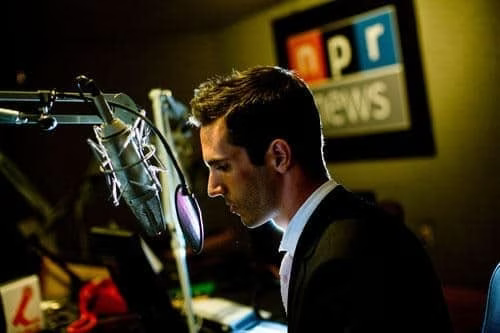Why High-end Podcasts Reduce the Bass in their Audio

I’ve been podcasting for around 5 years now, and at some point in the process, I became obsessed with mics and sound and recording.
For a while I used an RE-27 mic, which was quite nice, but I recently upgraded to a U87AI, by Neumann >. It’s probably the world’s most respected mic, used by NPR.
The sound that I thought I was into was a clear, deep sound, and I had created that in various ways over the years using extra bass boost on the mic itself, in my Rodcaster Pro mixing board, and in post using Audition or Hindenburg.
But then I read a piece > about how NPR achieves its famously great podcast sound, and it was all about doing the exact opposite.

the neumann u87 microphone
Basically, when people are traveling, driving, on trains, or just generally out and about, there is a lot of low frequency droll.
Like a deep hum that blends into the background.
And what NPR found was that audio that had these low frequencies in it would often get drowned out by—or mixed in with—that noise.
So they decided to cut through using higher frequencies.
They recommend activating low-pass roll-off, either on your mic itself or post-production, which takes that deep rumbly bass out of the voices, and speaking at an oblique to the mic from around 6-12 inches away.
This is taking some getting used to because I love that other sound, but I’m trying to see this as outsourcing a problem to NPR for the last 20-30 years.
They have high-end people who’ve come to this conclusion after decades of experimentation, so who am I to argue with that?
So if you want to make your audio more NPR-like, apply a low-frequency filter—either at the mic itself or in post—so your product can cut through the din.